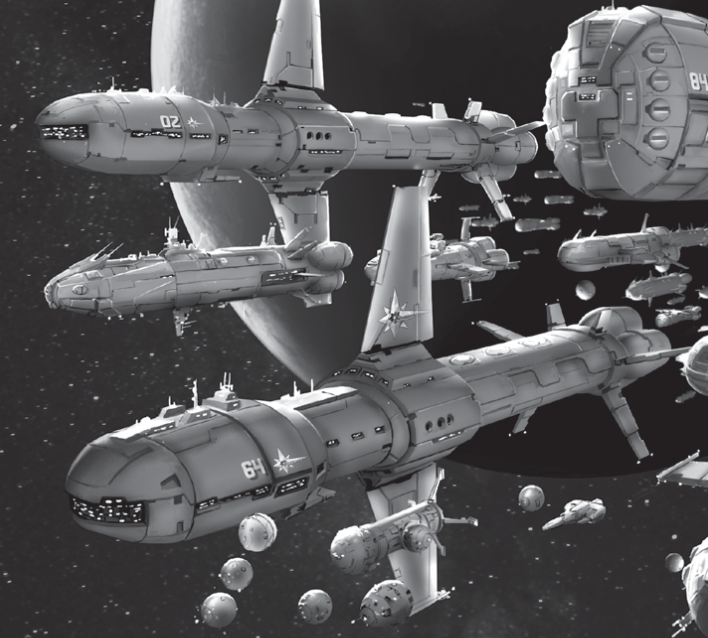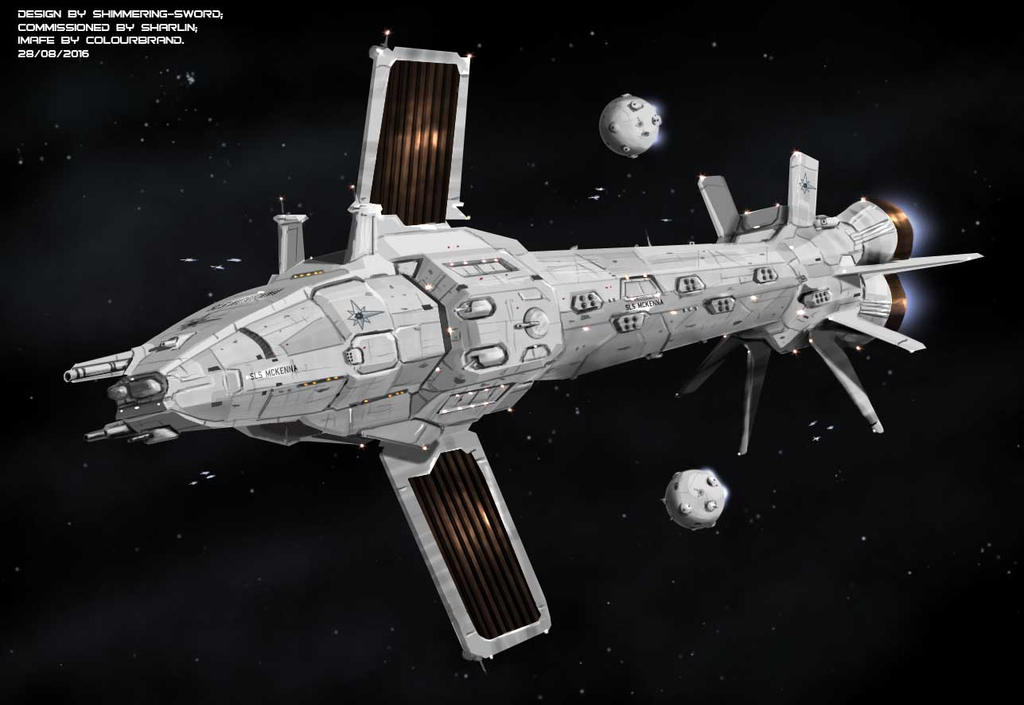The Combatants:
The Earth Alliance Omega Class Destroyer.


VS



The Situation: An Omega Class Destroyer and a MecKenna class Battleship are dropped into Sol. Both close range to identify the other and find out their intentions. Communications soon break down as both claim authority in Sol and demand the other to stand down. Neither is willing to do so.
The Arena: Local Space in Sol. No gravity wells or any asteroids to impede movement or anything to hide behind.
Victory conditions: Kill or incapacitate either ship. The commanding officer of the losing ship will issue a full unconditional surrender.
Blood Lust: No, both are in character and have well trained and competent crews and captains in Command.
Competence: Both ships are crewed by elite Captains and crews.
Interpretations: Canon interpretations for both.
EDIT.
Scenarios:
Scenario 1.) Ship vs Ship only.
Scenario 2.) Omega with 24 Aurora Starfuries while the McKenna has an equal number of light Areospace fighters.
Scenario 3.) Omega has 36 Thunderbolt Starfuries while the McKenna has an equal number of medium to heavy Areospace fighters.
Scenario 4.) McKenna has a full war load out. Max Areospace fighter and 6 Dropships. But now the Omega class is supported by 2 Hyperion class Heavy cruisers and the full fighter wing of a nearby Poseidon class Fleet Carrier (96 Thunderbolts).
Special Scenario: Replace the Omega with the Shadow Omega. For...reasons.
Special note: The issue of acceleration for the Omega came up came up due to simulated Gravity via a rotating section. From my research the ship more often than not maintains a 1.2G to 2G acceleration burn when traveling under normal conditions as not to induce stress on the frame. The ship can maintain a 4G acceleration in emergencies but this puts serious stress on the space frame. The Rotational section is seen as hampering the ships ability for greater acceleration.
Found a link concerning Earth Alliance Weapons.
Who wins?
The Earth Alliance Omega Class Destroyer.


VS



The Situation: An Omega Class Destroyer and a MecKenna class Battleship are dropped into Sol. Both close range to identify the other and find out their intentions. Communications soon break down as both claim authority in Sol and demand the other to stand down. Neither is willing to do so.
The Arena: Local Space in Sol. No gravity wells or any asteroids to impede movement or anything to hide behind.
Victory conditions: Kill or incapacitate either ship. The commanding officer of the losing ship will issue a full unconditional surrender.
Blood Lust: No, both are in character and have well trained and competent crews and captains in Command.
Competence: Both ships are crewed by elite Captains and crews.
Interpretations: Canon interpretations for both.
EDIT.
Scenarios:
Scenario 1.) Ship vs Ship only.
Scenario 2.) Omega with 24 Aurora Starfuries while the McKenna has an equal number of light Areospace fighters.
Scenario 3.) Omega has 36 Thunderbolt Starfuries while the McKenna has an equal number of medium to heavy Areospace fighters.
Scenario 4.) McKenna has a full war load out. Max Areospace fighter and 6 Dropships. But now the Omega class is supported by 2 Hyperion class Heavy cruisers and the full fighter wing of a nearby Poseidon class Fleet Carrier (96 Thunderbolts).
Special Scenario: Replace the Omega with the Shadow Omega. For...reasons.
Special note: The issue of acceleration for the Omega came up came up due to simulated Gravity via a rotating section. From my research the ship more often than not maintains a 1.2G to 2G acceleration burn when traveling under normal conditions as not to induce stress on the frame. The ship can maintain a 4G acceleration in emergencies but this puts serious stress on the space frame. The Rotational section is seen as hampering the ships ability for greater acceleration.
Found a link concerning Earth Alliance Weapons.
CONCLUSION - The total low-end output of what we assume to be a standard discharge from an Omega's primary forward particle laser cannon, comes to 1.79*1014 watts (179,842,016,448,000 watts - 179 Terawatts), or equal to a 43 kiloton bomb.
As we know that the Omega's armor is NOT comprised of iron, and the general consensus is that the Earthforce armor is at least 20X stronger than our base matterial, the X-Ray/Particle laser on the Omega class Destroyer must have an average output of at least 3.59*1015 watt (3,596,840,328,960,000 watt - 3,596 Terawatt), or equal to an 860 kiloton bomb.
Also, this is a standard discharge, not a maximum burst. Assuming that a standard discharge is 30% of critical power, the maximum output of the Omega's X-ray/Particle lasers would be 1.19*1016 watt (11,989,467,763,200,000 watt - 11,989 Terawatt), or equal to a 2.8 megaton bomb.
CONCLUSION - The total low-end output of what we assume to be a standard discharge from the Earth Alliance's heaviest plasma weapon comes to 6.36*1014 joule (636 Terajoules - 636,424,410,410,976 joules), or equal to a 152 kiloton bomb.
As we know that the Omega's armor is NOT comprised of iron, and the general consensus is that the Earthforce armor is at least 20X stronger than our base matterial, the heavy plasma cannon must have an average output of at least 1.27*1016 joules (12,728 Terajoules - 12,728,488,208,219,520 joules), or equal to a 3 megaton bomb.
Also, this is a standard discharge, not a maximum burst. Assuming that a standard discharge is 30% of critical power, the maximum output of the Earthforce heavy plasma cannon would be no less than 4.24*1016 joule (42,428 Terajoules - 42,428,294,027,398,400 joules), or equal to a 10 megaton bomb.
Who wins?
Last edited:




